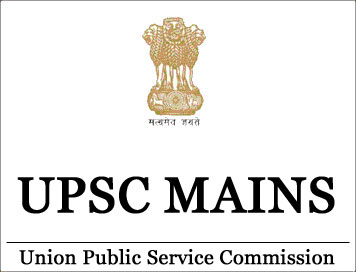
(The Gist of Kurukshetra)
ROLE OF NABARD IN ORGANIC FARMING
[MAY-2019]
ROLE OF NABARD IN ORGANIC FARMING
Introduction
Pollution free environment is essential for sustaining the life of all living
beings on the earth. While technology induction is required for feeding the
surging population, the excessive use of chemical fertilizers, pesticides, and
weedicides in agriculture has caused environmental imbalance and is causing
problems to all living beings on the earth. So Eco- friendly farming is the need
of the hour for sustainability.
Eco-friendly farming is farming of integration of biological, cultural and
natural inputs including integrated disease and pest management practices. It
not only advocates for stopping or restricting the use of pesticides, but also
emphasizes the need for farming which should create an ecological balance and a
micro environment suitable for health and growth of soil micro-flora, plants,
animals, farm workers and finally the vast population which consumes the farm
produce. So it combines tradition, innovation and science to benefit the shared
environment and promote fair relationships and a good quality of life for all.
Impact on the Economy: Many farmers are turning to organic or "low
input" farming as a strategy for economic survival. During the past 20 years,
farmers have shown steadily increasing interest in organic farming. Many farmers
who adopted organic farming methods early in this period were motivated by
reasons relating to the health and safety of their families, consumers, and
livestock, and by idealistic convictions about soil and land stewardship. More
recently, as costs of chemicals and credit have increased and commodity prices
have stagnated, thousands of conventional farmers have begun to search for ways
to decrease input costs, "Low input farming" is the new, socially-acceptable
term for organic farming, and economic survival is the motivation for many young
farmers.
Conventional Vs. Organic Farming: There are solid bases of studies
that suggest organic is equal to or more profitable than conventional farming.
Part of that competitive edge comes from the premium price - driven by consumer
demand - which organic farmers can get for their products. One of the most
persistent myths the studies consistently debunk is that organic systems are
incapable of reaching the same yields as conventional systems. After a
transitional period of 3 to 5 years, organic systems can produce up to 95
percent of conventional yields. Additionally, organic farming is less
dependent on fossil fuels, expensive inputs, and annual loans, making it less
vulnerable to financial market fluctuations. Organic is a low-waste system that
emphasizes quality over quantity, meaning it uses less land for the same profit.
Conventional crop subsidies exacerbate the problem, incentivizing farmers to
grow more than they can sell, which causes excess pollution, overuse of
resources, and food waste.
Natural Capital- A new concept of Economy: The capital is defined as
money, machinery, tools, or other physical assets that help increase an entity's
wealth, in the case of a farmer, capital means tractors, greenhouses, or hand
tools - things that can be used again and again to facilitate profit and growth.
Natural capital is a new branch of economics that would like to recognize the
ways we benefit from natural systems as a form of capital. Natural capital
includes a mind-boggling array of ecosystem services and resources provided by
the natural world, some of which we are yet to discover. Think of trees making
oxygen and capturing pollutants from the air, wetlands filtering water, insects
pollinating plants, and the incredible biodiversity of a place like the Amazon
rainforest generating new medicines. Mother Nature does a lot for us, and the
natural capital movement would like to quantify those values in order to more
easily incorporate them into the traditional economic schemes that do not
account for them. Organic Farming and Natural Capital: s discussed, organic
farming can stand its ground under traditional economic evaluations, but when we
also start to incorporate natural capital values, organic becomes the clear
winner for long-term profitability. Let us consider a few examples of how
organic farming utilizes and increases various natural capital functions:
Adding organic matter to the soil each year (a foundational organic practice)
increases the soil’s ability to store carbon dioxide. Organic matter in the soil
also increases the soil's water holding capacity, reducing pressure on water
resources and making organic farms more resilient to drought. Since water costs
money, drought tolerant farming systems mean cheaper food production over time.
Biodiversity on organic farms offers myriad financial benefits. A diverse
crop system means a succession of blooms that can feed insect populations (and
provide them with habitat) year-round. These beneficial insects help to keep
down populations of harmful insects, reducing or eliminating the need for
pesticides, and providing pollination services to increase harvest yields.
Genetic diversity on organic vegetable and seed farms acts as a well-endowed
gene bank for potential new varieties that will be resilient against future
environmental changes, insect populations, and diseases a service that is
essential to global food security with tasty food. NABARD and Organic Farming:
NABARD Consultancy services for Organic Farming:
Nabcons has the know-how on cultivation practices under organic farming
through alternate Eco-friendly Technologies like Biofertilizers, Biopesticides,
Neem formulations, Bio-fuels, etc. Production of Organic Manures:
- Systems for On-Farm Waste managementOff-Farm and Agro-industry
Wastes like Sugar factory Press mud, Coir pith, etc.
- City solid waste
- Vermicomposting
- Green Manuring Technique
Conclusion
- The role of Organic Farming can be leveraged to mitigate the
ever-increasing problem of food security in India. With rapid
industrialization of rural states of India, there has been a crunch for
farmland. Further, with the exponential population growth of India, the need
for food sufficiency has become the need of the hour.
- Furthermore, the overuse of plant growth inhibitor, pesticides and
fertilizers for faster growth of agricultural produce is detrimental to
human health and the environment as a whole. The proposition of
Organic Farming in India's Rural
- Economy holds good, as an alternative to arrest this problem.






